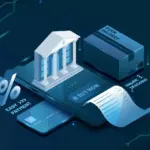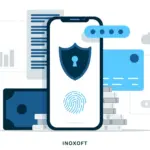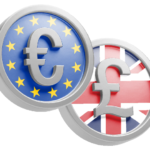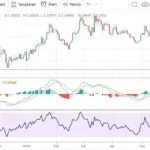In today’s global economy, supply chain transparency has become a critical factor in building trust, ensuring ethical sourcing, and improving efficiency. Yet, traditional supply chains often suffer from fragmented data, lack of visibility to fraud.
fragmented data, lack of visibility, and vulnerability to fraud.
Enter blockchain technology — a digital innovation that promises to transform how products are tracked, verified, and delivered from origin to consumer
1. Understanding the Supply Chain Challenge
Modern supply chains involve multiple stakeholders — manufacturers, suppliers, logistics providers, retailers, and customers — often spread across different countries.
Each participant maintains its own records, leading to data silos and potential information gaps.
This lack of transparency can result in:
- Counterfeit goods entering the market,
- Unethical labor practices,
- Environmental non-compliance, and
- Inefficiencies that increase costs and delays.
As consumers and regulators demand greater accountability, businesses are turning to blockchain to bridge these gaps.
2. What Makes Blockchain a Game-Changer
Blockchain is a decentralized digital ledger that records transactions across a network of computers. Once information is added, it becomes immutable — meaning it cannot be changed or deleted without consensus.
In supply chain management, this provides a shared, tamper-proof record of every step in a product’s journey, from raw materials to the retail shelf.
Key advantages include:
- Transparency: All parties can view the same verified data.
- Traceability: Every transaction is recorded and time-stamped, creating an auditable trail.
- Trust: Because records can’t be easily altered, participants can rely on data integrity without a central authority.
3. Real-World Applications of Blockchain in Supply Chains
Blockchain is already reshaping supply chains across industries:
- 🥦 Food Safety: Companies like Walmart and Nestlé use blockchain to trace food products back to farms within seconds, improving recall efficiency and consumer confidence.
- 💎 Luxury Goods: Brands such as LVMH use blockchain to verify product authenticity and prevent counterfeiting.
- ⚙️ Manufacturing: IBM’s Food Trust and TradeLens platforms use blockchain to enhance data sharing between suppliers and logistics providers.
- 🩺 Pharmaceuticals: Blockchain helps ensure that medicines are genuine and transported under proper conditions, preventing fake drugs from entering the market.
These applications demonstrate how blockchain can create end-to-end visibility, benefiting both businesses and consumers.
4. Benefits for Businesses and Consumers
For businesses, blockchain enables:
- Faster data exchange between partners.
- Reduced fraud and paperwork.
- Better regulatory compliance through immutable audit trails.
- Enhanced sustainability tracking, as companies can verify ethical sourcing claims.
For consumers, it offers the ability to trace the origin of products — from coffee beans to diamonds — simply by scanning a QR code, ensuring transparency and ethical responsibility.
5. Challenges and Limitations
Despite its potential, blockchain adoption in supply chains faces hurdles:
- Integration costs and the need for technical expertise.
- Interoperability issues between different blockchain systems.
- Data privacy concerns, as some stakeholders may not want to share all information publicly.
- Regulatory uncertainty in certain regions.
To overcome these challenges, companies must focus on collaboration, standardization, and gradual implementation.
6. The Future of Blockchain-Powered Supply Chains
Looking ahead, blockchain will likely merge with emerging technologies such as the Internet of Things (IoT), artificial intelligence (AI), and 5G connectivity.
IoT sensors can automatically record data on blockchain — for example, temperature, location, or humidity — ensuring accuracy without manual input.
Meanwhile, AI can analyze blockchain data to predict disruptions, optimize logistics, and enhance decision-making.
As these technologies converge, the supply chain of the future will be smarter, more transparent, and more resilient than ever.
Conclusion
Blockchain is revolutionizing supply chain transparency by making information traceable, trustworthy, and accessible in real time.
While challenges remain, its ability to enhance accountability, combat counterfeiting, and strengthen consumer trust marks a turning point in global commerce.
In an era where trust is currency, blockchain offers a powerful tool to build it — one transaction at a time.














